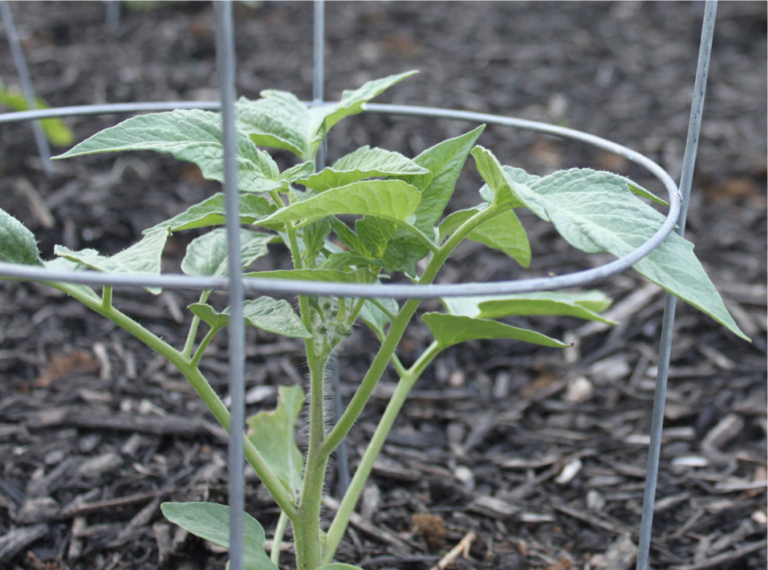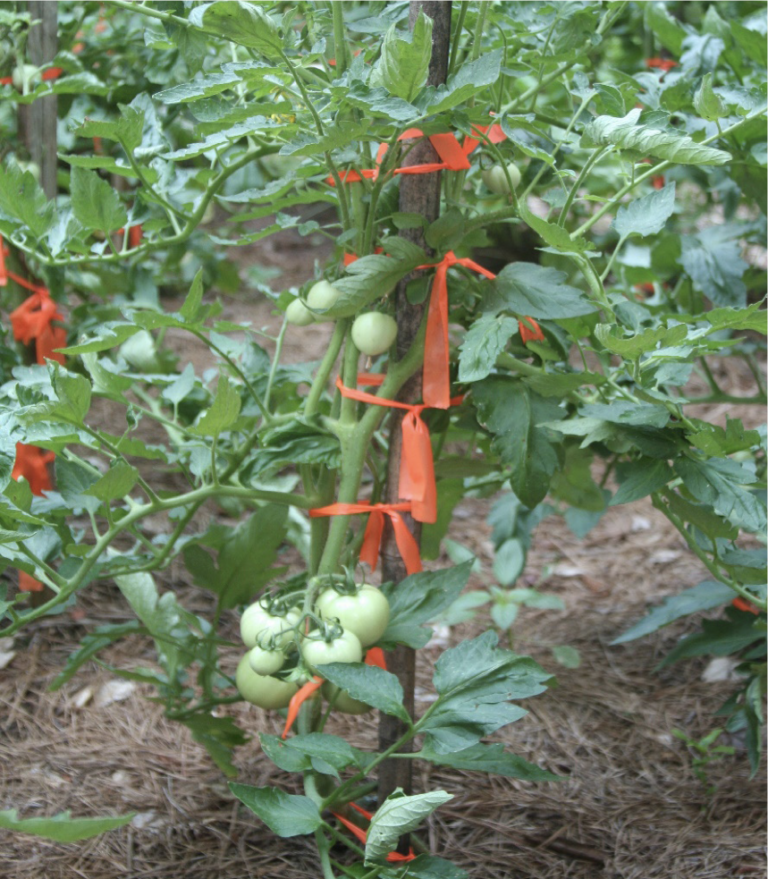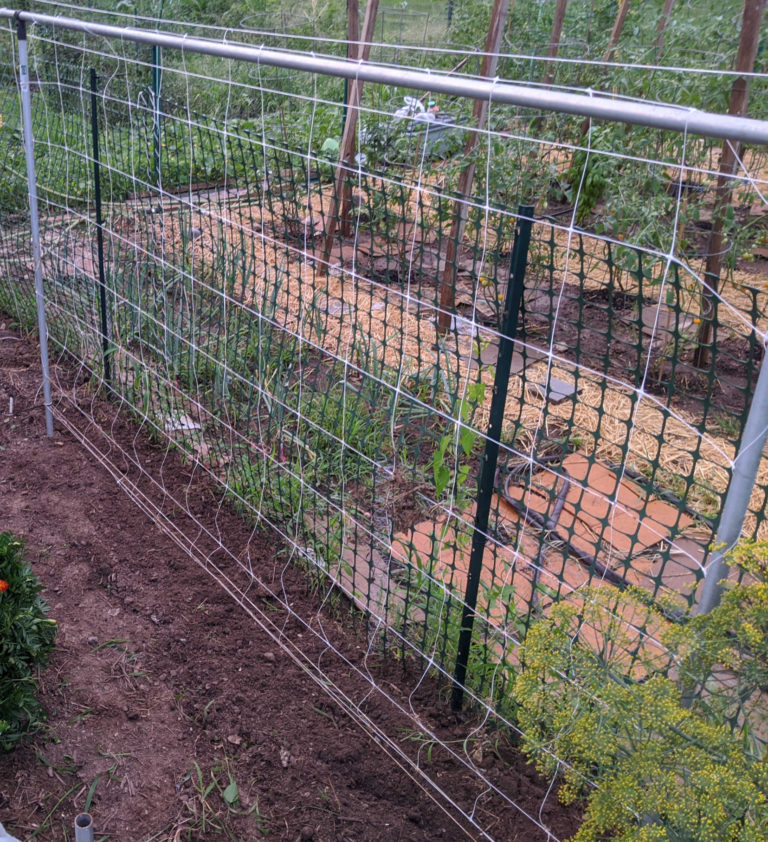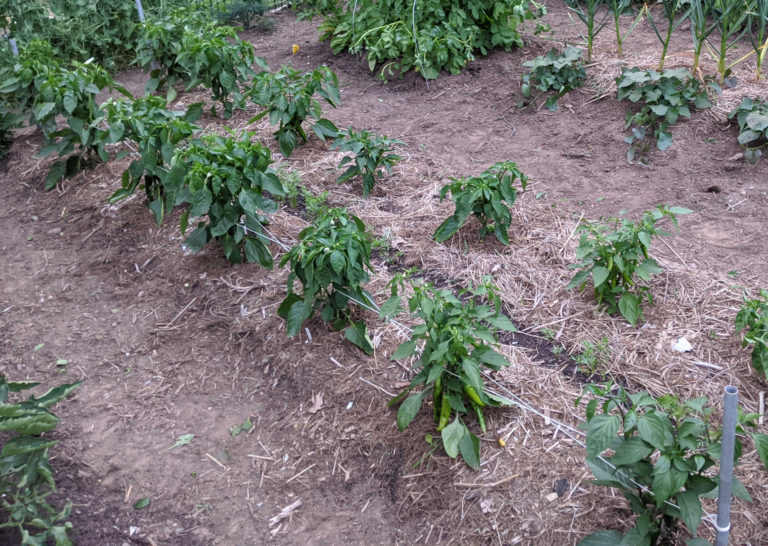Plant Supports
All gardeners will need to support their plants at some point in the season. It can be confusing and sometimes costly to choose a method. Because of this, we have listed the 4 main ways plants can be supported in the garden. Read through the descriptions of each and talk to your fellow gardeners to find a method that suit your needs.
Ways to Support Your Plants
Cages
The use of cages are by far the most common way people support plants in the garden. They come in a wide variety of sizes, are inexpensive, and are usually easy to store. They consist of a very coarse wire mesh bent into a square or cylinder.
The most common type of cages used goes by the name of “tomato cage” and are available at many garden centers. These are very good at supporting plants like peppers, but contrary to the name, shouldn’t be used for tomatoes. Tomatoes quickly outgrow the cage and will either become trapped inside, resulting in poor airflow and sunlight, or will grow beyond the cage requiring supplemental supports.
In order to accommodate tomatoes, we recommend building your own using steel animal fencing with holes large enough for you to easily reach your arm through. This fencing can be bent into a cylinder or, better yet, cut into 3-4 equally-sized flat pieces to be tied together into a triangular or rectangular cage. This modularity allows for easy disassembly and storage at the end of the year as well as allows you to create shapes such as a zig-zag pattern to fit better into the layout of your garden.
- Peppers
- Tomatoes
- Peas and Beans
Stakes
Plant stakes come in many forms: wood, bamboo, nylon-coated steel, etc. They are inexpensive and easy to install but require more maintenance than cages since plants have to be regularly tied to the stakes in order to be supported.
Most gardeners use stakes in some form or fashion throughout the year. Often times they are used as the sole means of supporting plants. This is not recommended for a number of reasons but more importantly it reduces sunlight and airflow to the plant. We encourage you to use stakes as a supplemental support or within another trellising system such as one using trellis netting or the basket weave method.
Trellis Netting
Trellis netting is an effective and low-maintenance way of supporting plants and is recommended whenever possible. When configured properly, it spreads plants along the plane of the trellis which improves sunlight and airflow to the plants. It also eases access to the fruit of the plant.
It is constructed by driving two vertical supports into the ground and connecting them with a horizontal beam. In between the three supports is netting designed to support plants. Depending on the plant, the height of the trellis will vary from 4′ for cucumbers to 7’+ for tomatoes.
Train your plants along the trellis plane by tying them to the netting with garden ties or old cotton T-shirts that have been cut into strips.
- Tomatoes
- Cucumbers
- Peas and Beans
- Most plants with vines
Basket Weave
Basket weave is an inexpensive and simple way to support plants. Depending on the number of plants being supported, all that is needed is a few sturdy stakes and some twine. The final product allows a lot of light and airflow to all sides of the plant.
The method of construction involves driving two sturdy stakes into the ground on either end of a row of plants. Starting at one end, tie the twine to the stake about 10″ from the soil line and weave it between each plant until you reach the second stake. Return the twine to the first stake by weaving the opposite way through the plants. Be sure to keep the twine taught the entire way. As the plants grow, you will repeat the process every 6-8″.
For large and heavy plants like tomatoes, stakes should be placed between every other plant. For plants that are able to support themselves such as peppers, you can get by with a stake every 6-8 plants.
- Peppers
- Tomatoes




